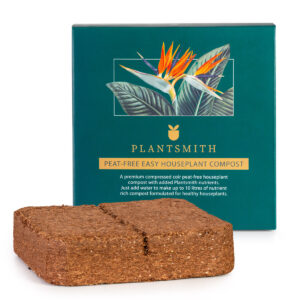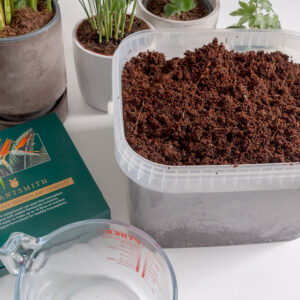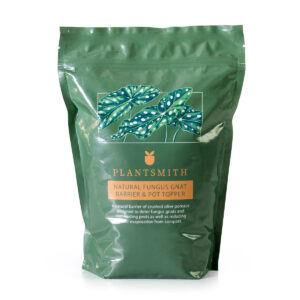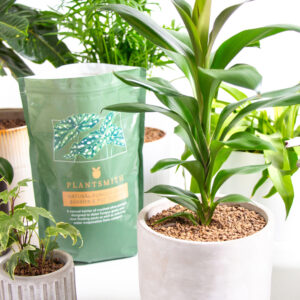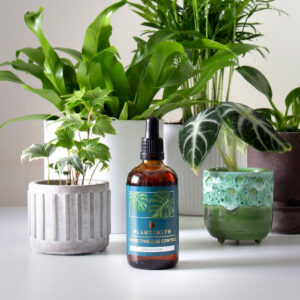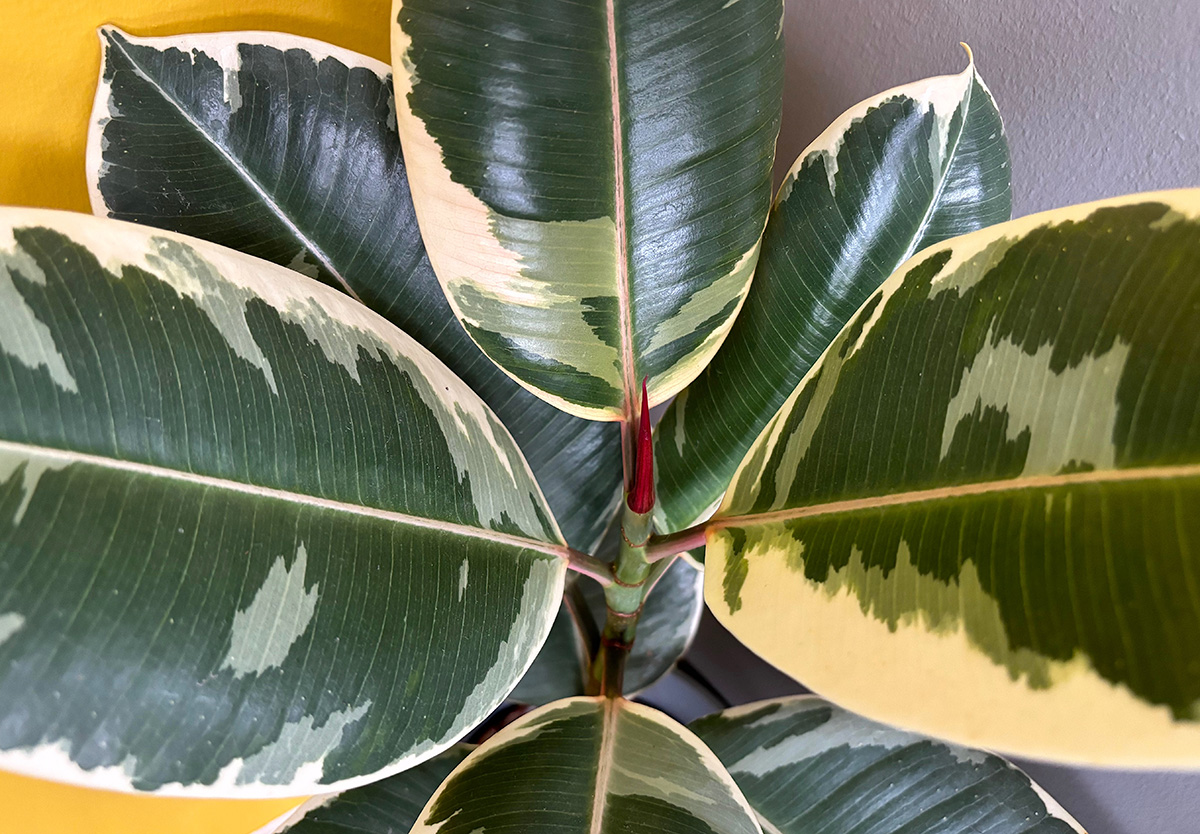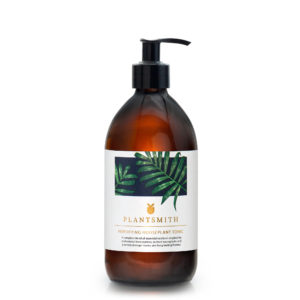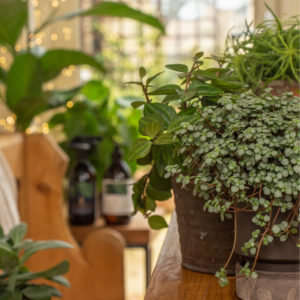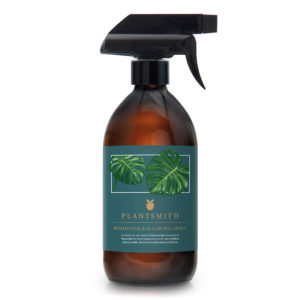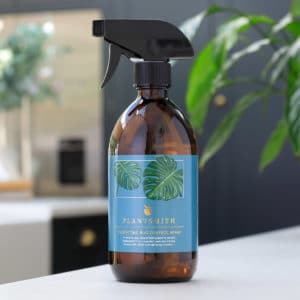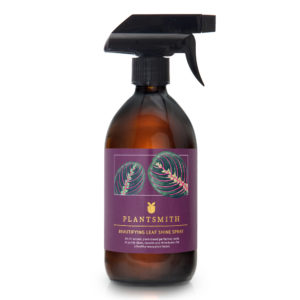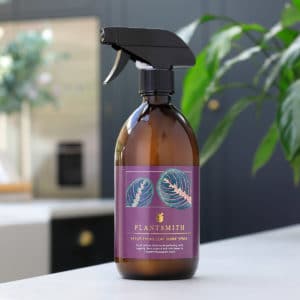If you are looking for a tough, evergreen houseplant that is easy to look after then a rubber plant could be for you. A member of the fig family, Moraceae, and native to Southeast Asia these plants can escalate to an impressive height in the wild.
Large, dark green, glossy oval leaves shine from a central vertical stem to make a tall neat potted houseplant. Try the intensely dark F. elastica ‘Black Prince’ or lighten up a space with the variegated, more compact variety ‘Tineke’ boasting attractive green and cream foliage often with a pink tinge when leaves are young.
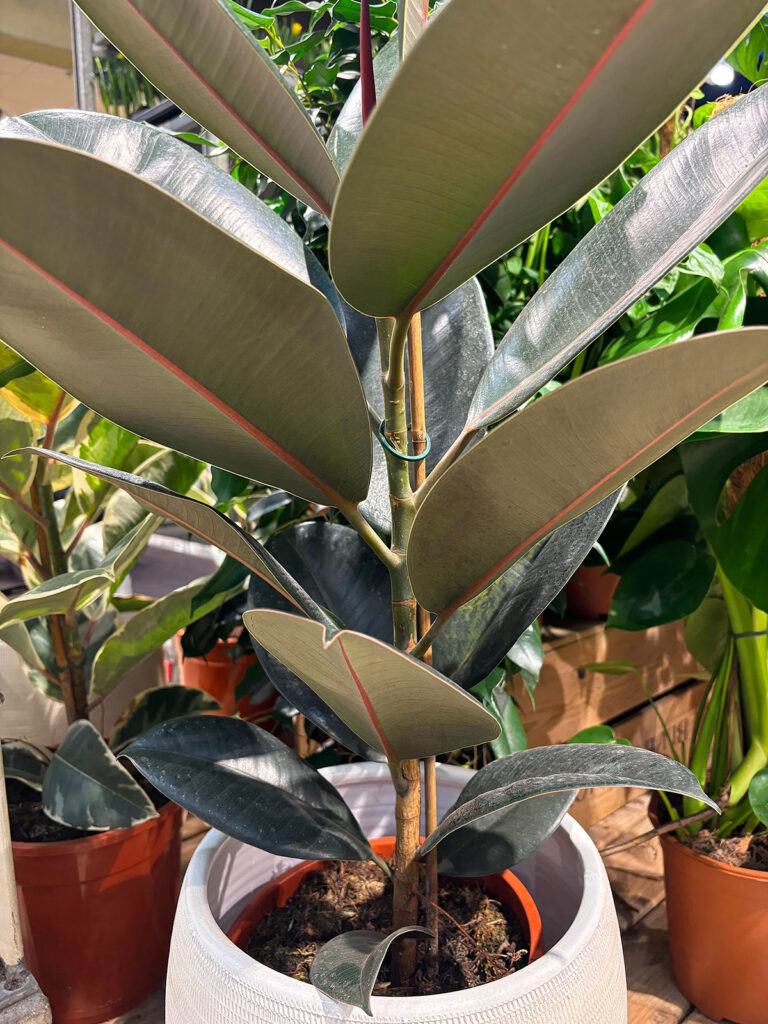
Although Ficus elastica does have milky white rubber producing latex sap it is not to be confused with the Amazonian rubber tree, Hevea brasiliensis, whose natural rubber latex is used commercially to make 99% of the world’s rubber.
So what do we need to do to keep these tropical botanicals buoyant?
Light
Rubber plants love bright indirect light but will scorch if placed in an intensely lit spot so find shielded areas within your home that get bathed in natural light via skylights, a bright windowsill or even through thin curtains.
These large broad leaves can quickly accumulate household dust which can block pores and hinder photosynthesis so wipe a damp cloth over the foliage or clean with Plantsmith’s Beautifying Leaf Shine Spray. If you are short of time, pop the pot in the shower and gently wash off the dust with tepid water.
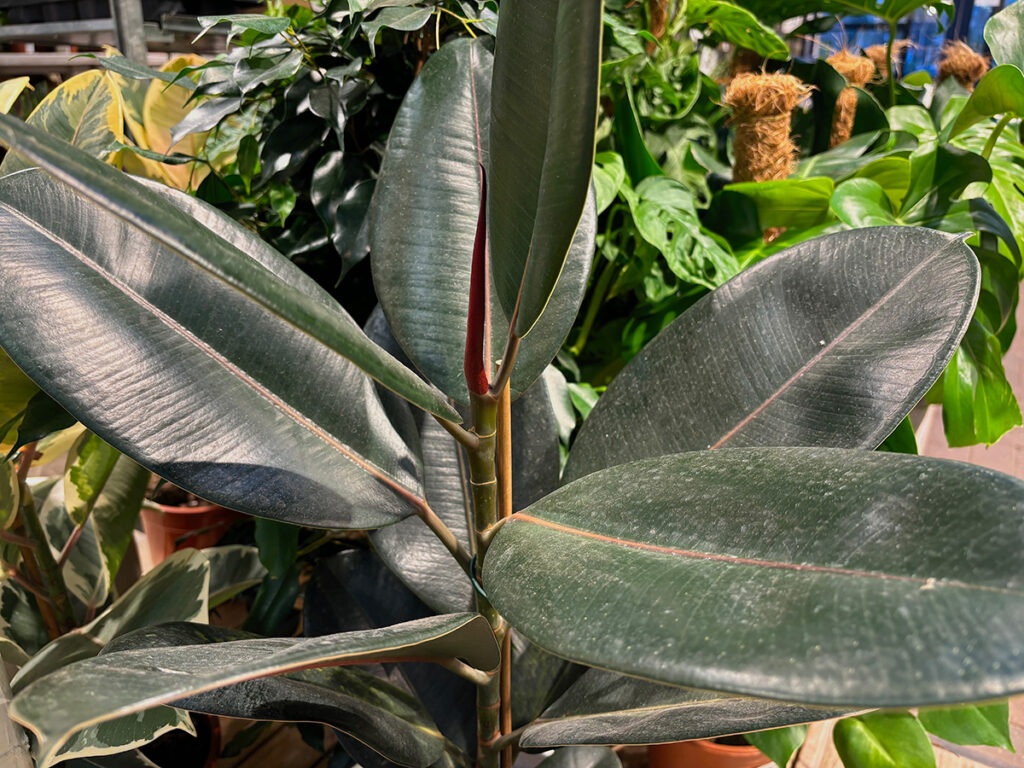
Water
From spring to summer keep soil moist and aim to water every week or two; leave a longer gap from autumn to winter so the top soil can dry in between waterings. Mist regularly in between waterings; rubber plants love humidity.
Although rubber plants would thrive in a bathroom or kitchen, it is difficult to locate your entire houseplant collection into these two rooms, so if situated in a lounge or bedroom, place the pot on a pebble tray and mist frequently. Grouping houseplant pots together is also a simple way to raise humidity or invest in a humidifier.
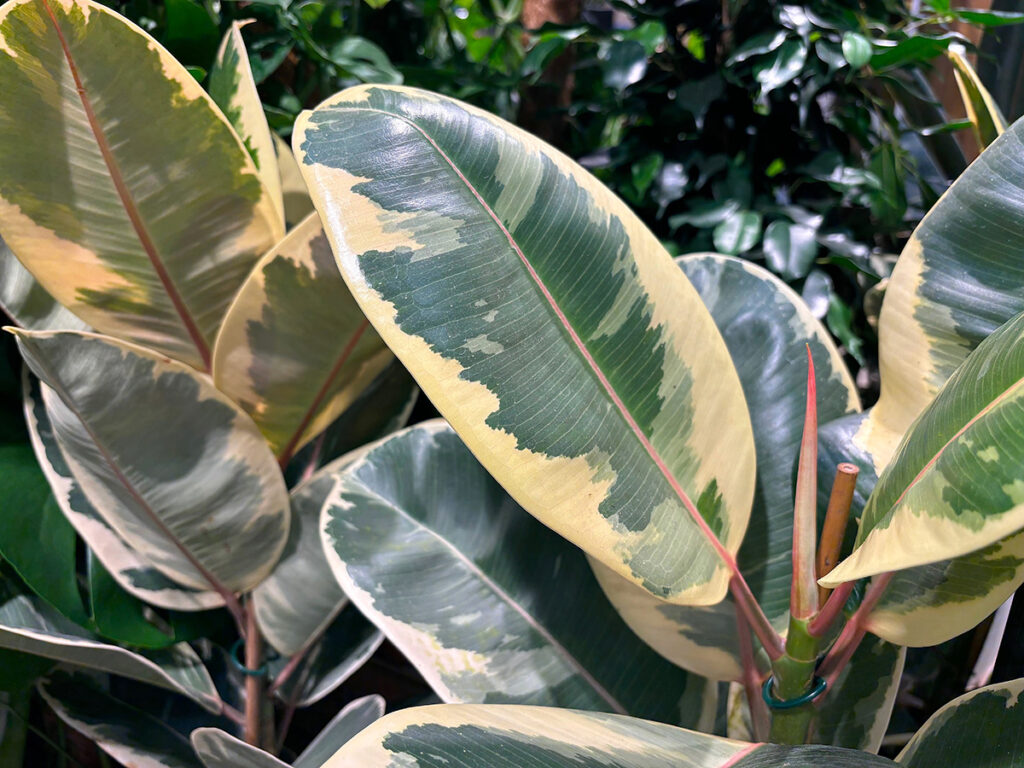
Spray foliage with a fine mist of rainwater, or to increase nutrients as well as humidity, use Plantsmith Perfecting Houseplant Care Mist. Whatever room your plants are situated in, misting helps compensate for dry air by temporarily increasing the humidity surrounding the plant.
Temperature
Rubbers plants will happily live in average household temperatures around 16-24°C (60-75°F) but if warmer, great. Avoid cold, draughty windows and hot radiators. Try and keep temperatures consistent without great fluctuations.
Feeding
Feed rubber plants once a month March to September and stop feeding over winter. Use a dedicated houseplant food like Plantsmith’s Fortifying Houseplant Feed & Tonic which contains a balance of essential nutrients and minerals to keep houseplants healthy.
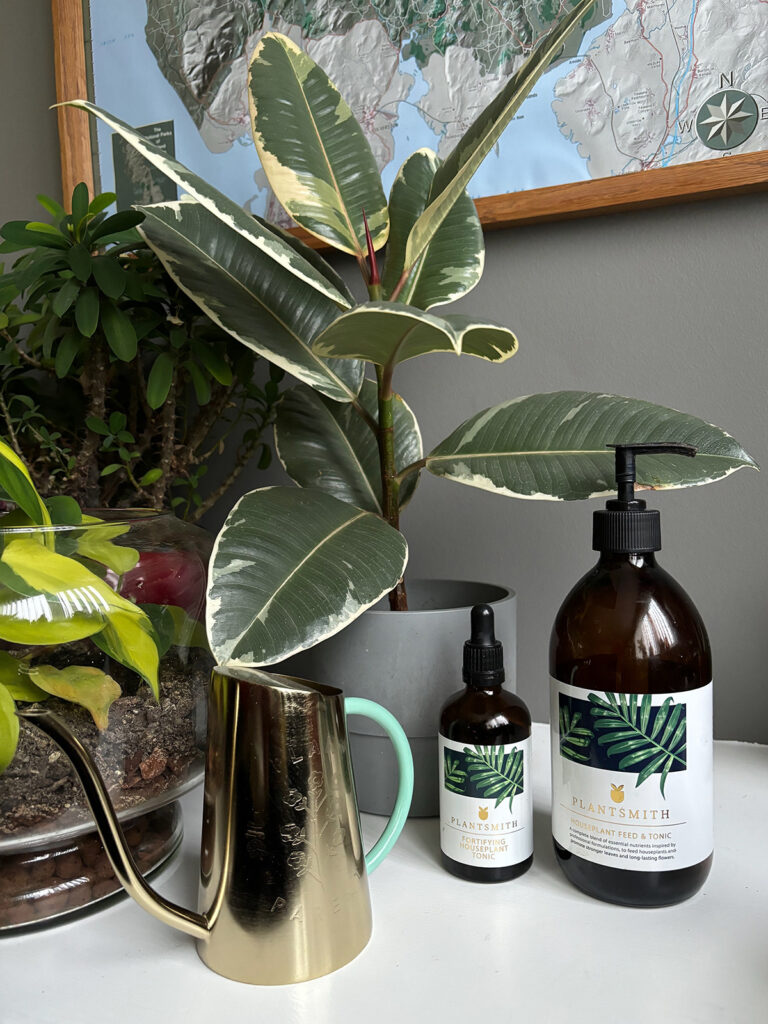
To apply, shake the bottle then add 5 ml (approx. 4 pumps from 500ml bottle) or dilute two full pipettes from the 100ml bottle per litre of tepid rainwater; mix then water the soil. Potassium, magnesium, iron, kelp and essential micro and macro and nutrients will encourage strong, healthy growth.
Be careful not to over fertilise houseplants as this can be detrimental; mineral salts can build up and burn the roots but by using a balanced houseplant food you can help keep houseplants healthy and reduce the likelihood of plants succumbing to pests and diseases.
Soil
Buy a ready-made peat-free houseplant compost or make your own free-draining substrate by combining compost, horticultural sand and perlite for aeration. Make sure pots have drainage holes so excess water can drain out of the bottom; prevent roots sitting in water or they may rot. Repot plant every couple of years.
Propagation
Rubber plants are easy to propagate from cuttings. Cut a 10cm length of healthy stem below a leaf node and remove all the lower leaves. Pop the stem in a jug of water, either leave to let roots develop over the next few weeks or dab cuttings in rooting hormone and plant in a pot of gritty compost. Wear gloves to avoid skin contact with the sticky latex sap.
Pests
Rubber plants are not overly bothered by pests but like any plant indoors they can succumb to fungus gnats and sap suckers like spider mites, mealybug and scale. Keep an eye out in the houseplant’s leaf joints or foliage and remove by hand if spotted as well as regularly spraying with Plantsmith’s Bug Control Spray to deter an infestation.
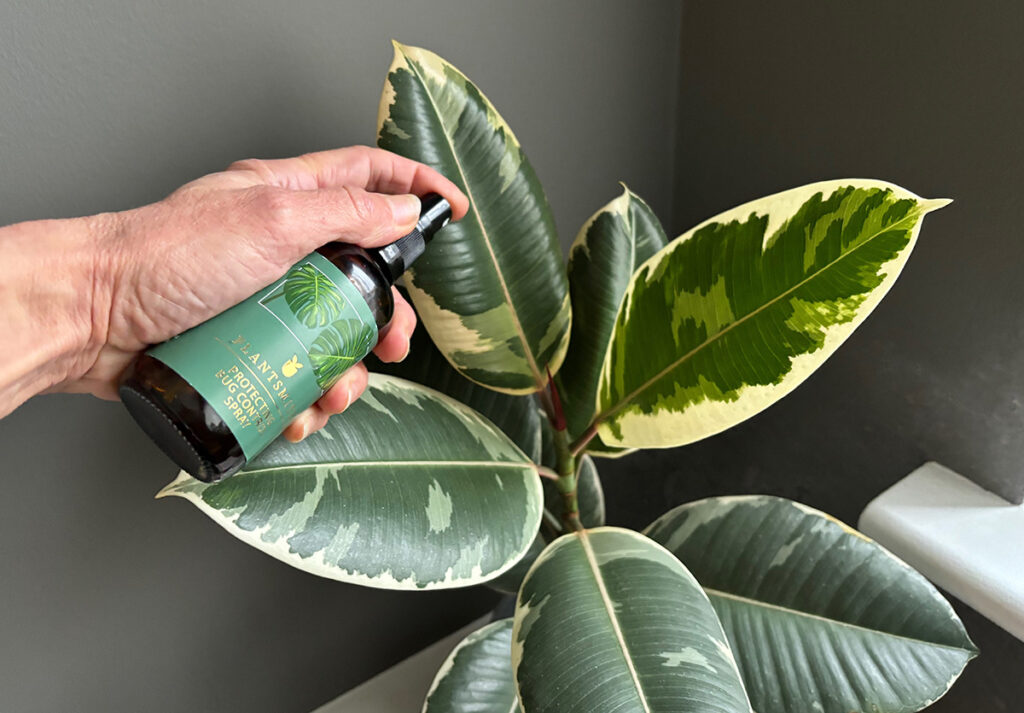
Problem Solver
Rubber plant’s sap contains latex which can cause an allergic reaction in some people. Always wear gloves when handling your plant and be particularly careful if propagating or cutting stems and foliage. Keep out of the reach of children; the sap can irritate skin.
Safe for pets?
Be aware rubber plants are mildly toxic to cats and dogs.
Leaf fall
If leaves start to drop this could be a sign that the houseplant is experiencing some environmental stresses, from cold temperatures, overwatering, underwatering, to receiving insufficient light. Move the pot to a brighter spot, adjust your watering schedule and the ficus should recover.
Curling leaves
Curling leaves could be a sign that the air is too dry and your plant needs more humidity. If so, mist regularly, group pots together and place on a pebble tray to help raise humidity. Monitor!
Yellow Leaves
Yellowing leaves can be a sign of overwatering or underwatering or an over-fertilised or nutrient deficient plant. Adjust your watering and feeding routine.
Fun Facts
In the wild Ficus elastica can grow into an enormous 60m tall tree with a 2 metre wide trunk but do not worry, rubber plants make a great ornamental houseplant indoors and over time are more likely to reach the not so giddy height of a couple of metres.
Ficus elastica has been proven to be a great air purifier so clean the air naturally by filling your home with this houseplant!
Feng shui attributes rubber plants to wealth and happiness.
